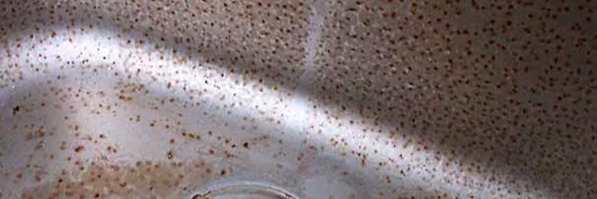

Steel is considered as the best substitute of rust prone metals. Well, the steel itself is prone to corrosion but it has strong resistance. Depending upon the rust resistance, grades are defined and its quality is defined. Moreover, the conditions, in which the alloy being used is a big contributor. Take the example of taps, same taps would get attacked by rust in areas where salinity is the natural property of the water. The composition of alloy decides its chemical and physical properties. A good quality steel has almost 10.5% chromium. As steel is widely used in domestic, commercial and industrial applications. Therefore, it is important to assess its properties.
Apart from the composition, there is an external coating on the steel articles to protect the surface from the physical stress. This further increases the life, as the environment would attack the coating first. In ASTM B117, the whole testing procedure is defined. The environmental conditions are simulated in Salt Spray Chamber. It performs an accelerated test on the sample. A NaCl solution is used to create a salt laden fog. The fog has 5% of salt which is much higher in comparison to sea water. A uniform temperature is maintained inside the chamber which is approximately 35°C to 47°C. The chamber has an atomiser which creates the fog by combining NaCl with water.
What Precautions to be taken while performing this test?
To get the accurate test results, it is always advised that operator should not disturb the environment by opening the canopy of the chamber, not even once. As it may lead to the loss of heat and fog, so, the test should be completed before opening the chamber.
Never ever open the chamber immediately after the completion of the test. The fog inside the chamber is very harmful to the metal articles. The immediate opening would lead to dissipation of fog in the atmosphere and it would start affecting the metal in the surroundings. Auto air purging is provided in the Presto’s Salt Spray Chamber. Air purging settles down the fog by changing it into the mist.
According to the test standards, the samples are placed at an angle of 20°. The chamber has slits at this particular angle to place the sample. Also, the sample should not be placed near the walls, there has to be the minimum distance between the walls and specimen. The temperature is high near the walls due to the presence of heaters as compared to in the centre. However, the fog is distributed uniformly across the chamber.
Keep a close check on the level of the NaCl solution. The reservoir tank has a capacity of 60 litres which runs a test for 20-22 hours non-stop. If the machines keep on running without the solution, it would lead to damage of atomiser and air saturator. There is an inbuilt alarm and level indicator to alert the operator.
Related Blogs

A Tensile Tester is designed to pull a material sample until it breaks. It helps engineers measure important properties like tensile strength, elongation at break, yield point, and more.

UV Chamber simulates sunlight to test material durability against UV rays, helping ensure long-term quality and resistance to environmental damage.

Salt spray test checks corrosion resistance of materials using a salt spray chamber. Essential for quality control in coatings, metals, and finishes.